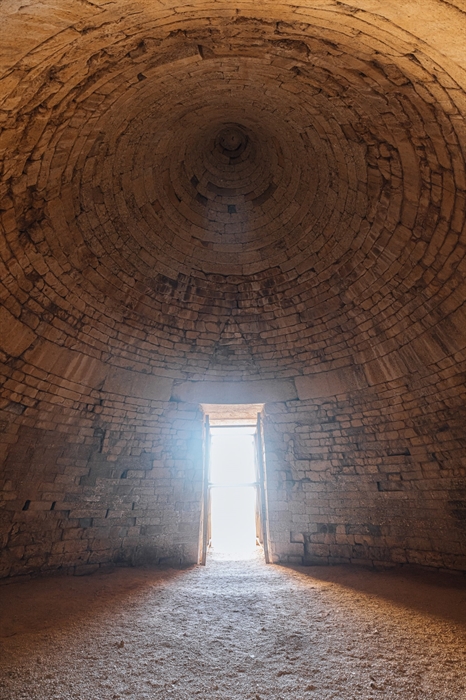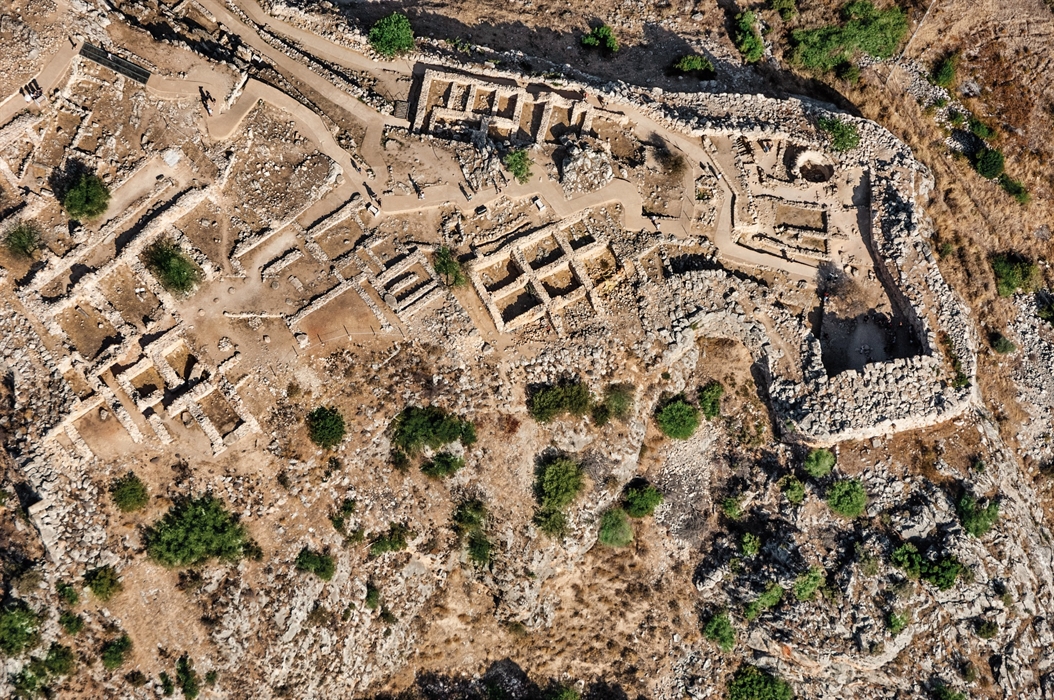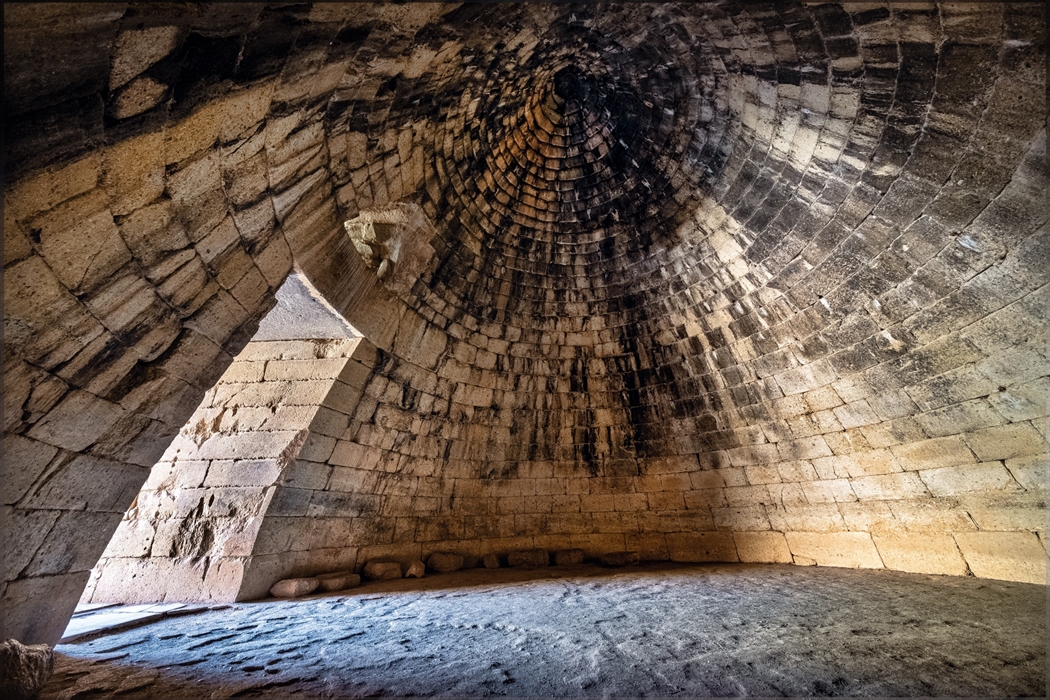In Mycenae, you will admire the magnificent tholos tomb called “Treasury of Atreus” or “Tomb of Agamemnon”. It is an impressive “representative” of the Mycenaean civilisation, presumably built between 1350-1250 BC.
In Mycenae, you will admire the magnificent tholos tomb called “Treasury of Atreus” or “Tomb of Agamemnon”. It is an impressive “representative” of the Mycenaean civilisation. It was presumably built between 1350-1250 BC for an important member of the royal family.
Standing in the centre of the funerary monument and facing the dome, 13.4 meters high, you feel awe. Especially, if you know that it is an excellent sample of engineering. The dome, with a huge diameter (14.60 m) was built using carved stones of the same height. They form consecutive “rings” of an increasingly smaller diameter, until they converge on the top. The 33 series of stones are kept in place thanks to gravity, and the pressure applied by the backfilling on top of them, as well.
On the tomb’s floor, there were two carved pits. Two stone bases indicate the presence of columns. Probably, this is where the “Elgin marbles” come from, which are now housed in the British Museum, made of plaster and decorated with embossed bulls.
Equally impressive is the facade of the tholos tomb. It’s 10.50 meters high, and the doorway reaches a height of 5.40 meters. Over the doorway, there is a lintel, consisting of two blocks: The inner block weighs 120 tons.
After the Mycenaean period, the monument was no longer used as a tomb. It had already been looted and partly buried, when Pausanias visited it in the 2nd century AD. He listed it as “treasury of Atreus”, namely vault, as locals called it.
(Information from: odysseus.culture.gr).
Burial customs
The tomb characteristics (pit tombs, chamber tombs and tholos tombs), as well as the grave goods found in their interior, form an importan source of information about the culture, customs and beliefs of the Mycenaean societies. In the chamber and tholos tombs, the deceased was placed in the centre, with the grave goods surrounding them. They were in a lying position, sometimes with their knees bent and head raised. After the burial, the Mycenaean people held funerary feasts, as indicated by the jar fragments and the animal bones found in the ground. On top of the tomb, they raised a small tumulus, where they placed the tombstone.
Find the destination on the interactive map below. Open on Google Map.
Categories
Σχετικό περιεχόμενο χρηστών (UGC)
Ενημερωθείτε για ενδιαφέροντα θέματα γύρω από τον προορισμό μέσα από το περιεχόμενο των χρηστών μας
Newsletters
- About Us
- FAQ's
- Map
- Tourism Information Centers
- Disclaimer
- Sitemap
- Our Brand
- Media Room
- Add your Business
- Corporate
- MICE

Peloponnese. The land of impossible beginnings





Design and creation from Cosmote
Marinas and Moorings
Diving Centers
Get Inspired
- Media Gallery
- Peloponnese Travel Blog
- The Peloponnese in the Media
- Your Feedback
- Users' General Content
- Users' Local Products
- Users' Events Content
- Ask a Local
More
- My peloponnese vibe
- Our providers Network
- Destinations Map
- Weather
- Public Transport
- Frequently Asked Questions
- Useful Phones
- B2B
- Destination Statistical Data
- Contact






